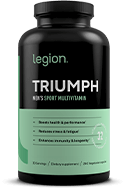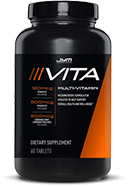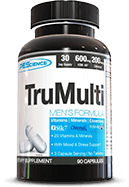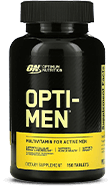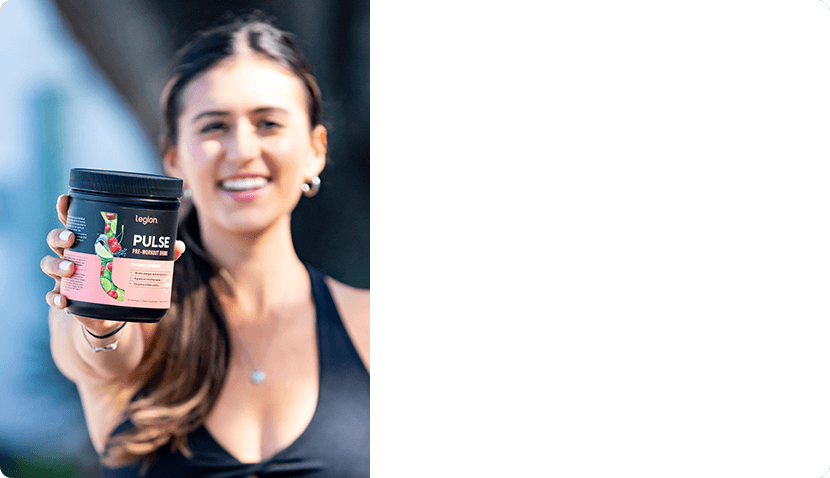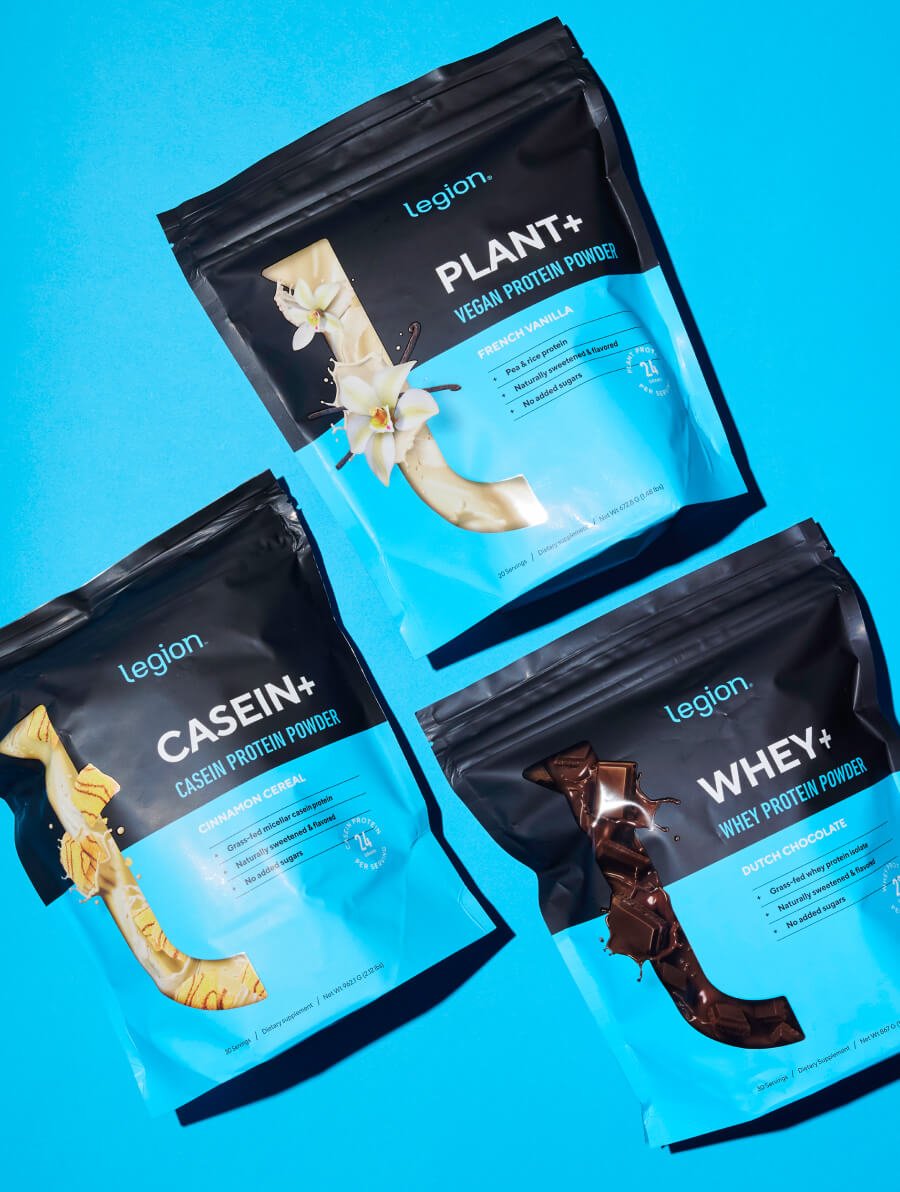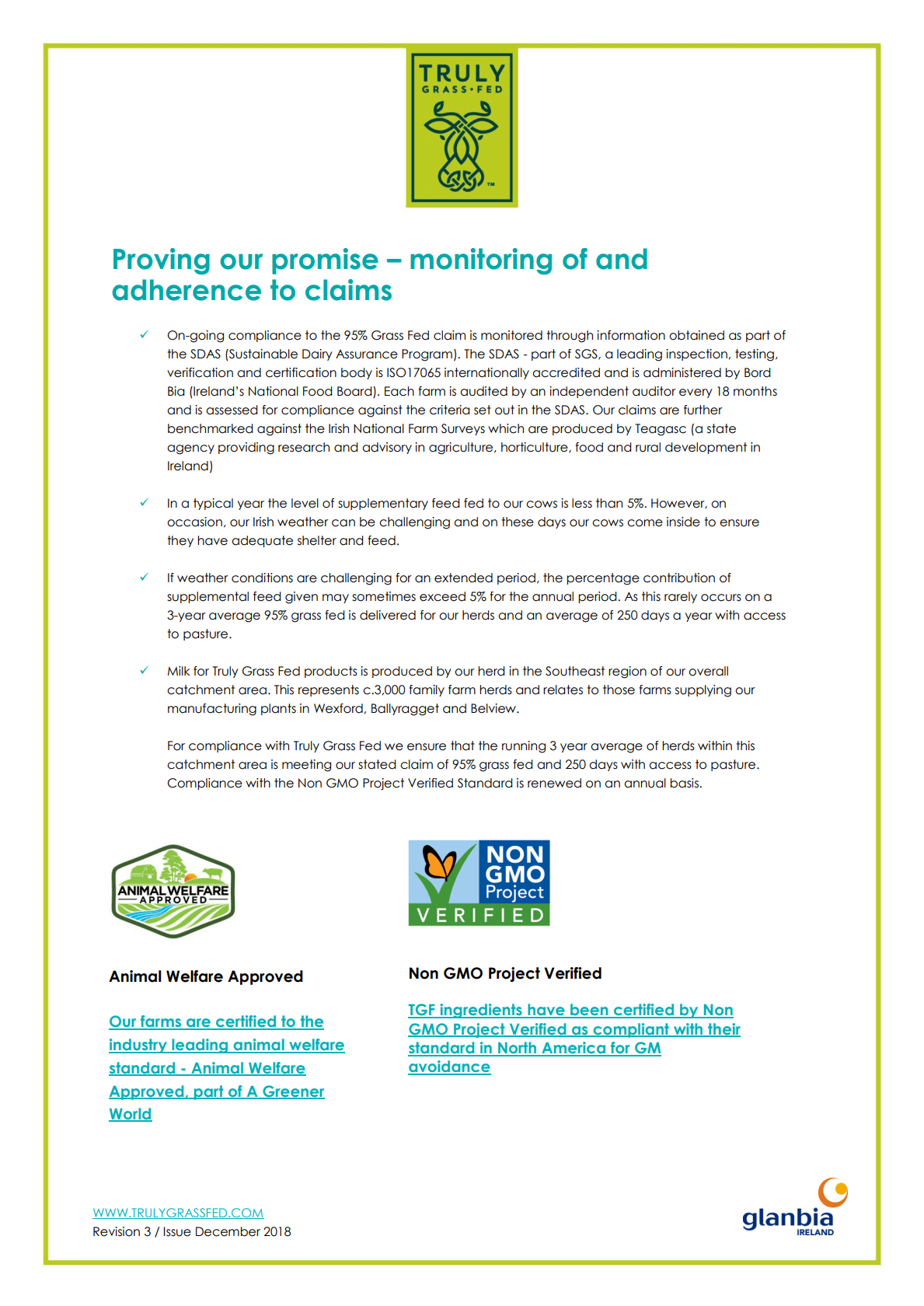Not happy with your purchase?
Simply let us know, and you'll get a full refund, no questions asked. And you don't even need to return anything.
So that means you can say "yes" now and decide later.
Ingredients & Directions
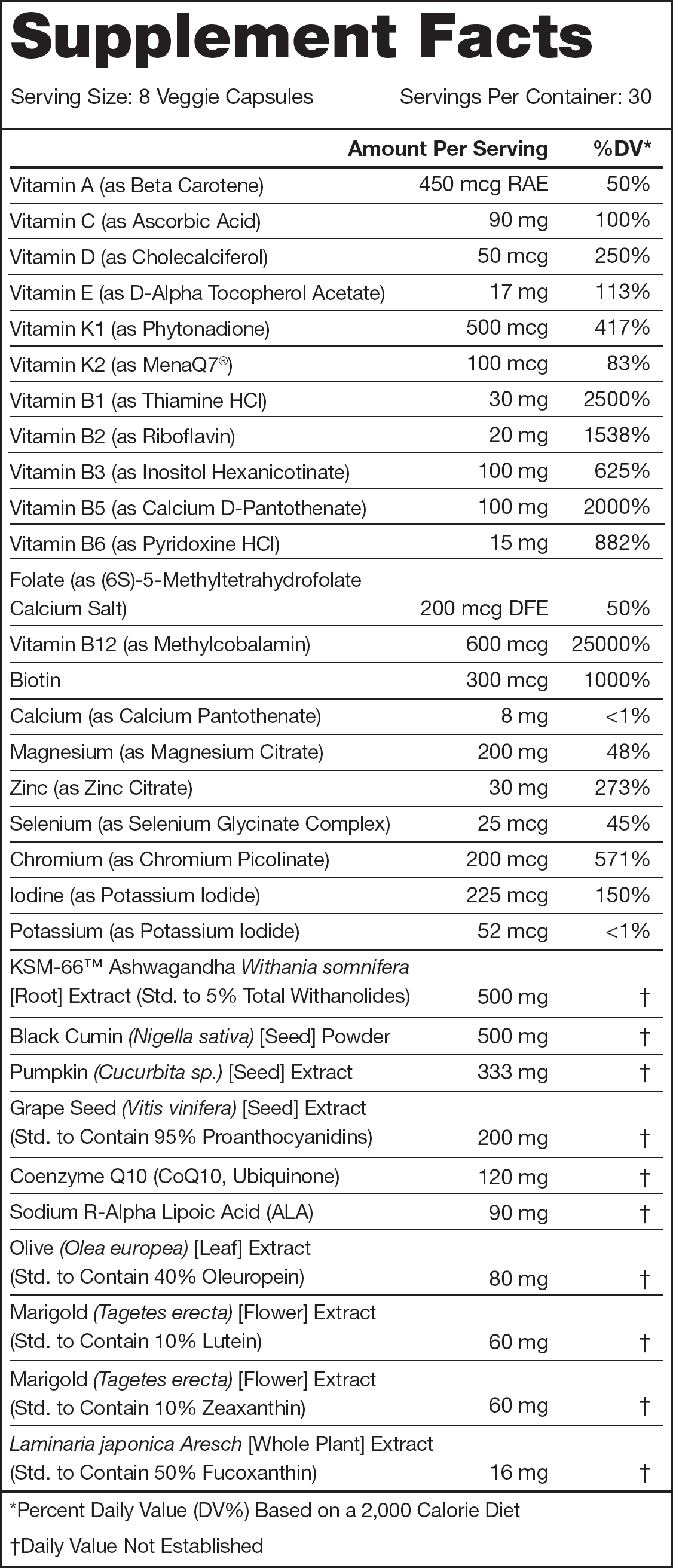

Directions
Take 4 capsules, two times daily, with meals. For optimal results, take every day.
Warning
Check with a qualified healthcare professional before using this product if you are under 18 years of age or if you have any known or suspected medical condition(s) and/or are taking any prescription or OTC medication(s).
KEEP OUT OF REACH OF CHILDREN. STORE IN A COOL, DRY PLACE. DO NOT USE IF SAFETY SEAL IS BROKEN OR MISSING.
Legion Triumph Ingredients (2,315 milligrams per serving)
20 Essential Vitamins and Minerals (605 milligrams per serving)
Triumph contains clinically effective doses of twenty vitamins and minerals that are vital for health, performance, and wellbeing, including those often overlooked or under-dosed in other multivitamins like vitamin K1, K2, and D, and zinc, magnesium, iodine, and chromium.
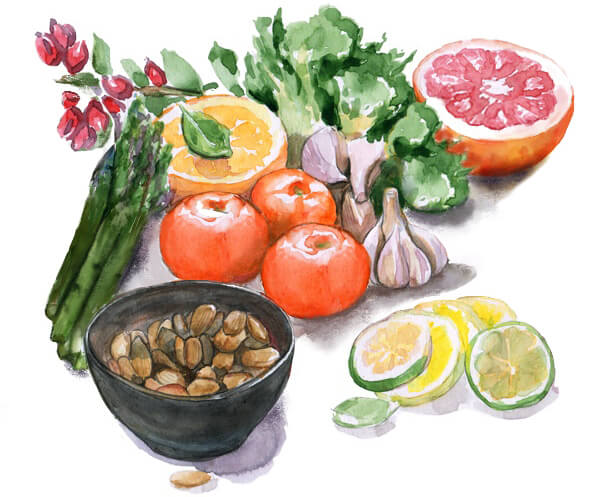
Alpha-Lipoic Acid (90 milligrams per serving)
Alpha-lipoic acid (ALA) is a molecule produced by the body and found in several foods, including yeast, liver, kidney, spinach, broccoli, and potatoes.
It acts as an antioxidant and can increase the activity of other antioxidants by influencing a protein known as Nrf2.[7]
Research shows that supplementation with alpha-lipoic acid supports levels of an antioxidant known as glutathione in the body, which occurs in all cells and is a primary defense against oxidative damage.[8][9]
It also supports your body’s energy production by increasing the activity of enzymes such as pyruvate dehydrogenase, which help turn food into usable energy in your cells.[10][11][12]
We chose to include 90 milligrams of ALA per serving because this dose provides meaningful health benefits and enhances the effects of CoQ10, another key ingredient in Triumph.
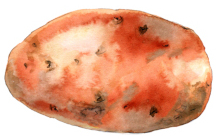
Grape Seed Extract (200 milligrams per serving)
Grape seed extract is a substance derived from the ground-up seeds of red wine grapes.
It has long been used in European medicine because it contains a powerful antioxidant known as procyanidin B2.
Research shows that supplementation with grape seed extract . . .
- Increases nitric oxide production (which improves blood flow and endurance)[13][14]
- Enhances blood flow to the extremities, which can reduce the appearance of varicose veins[15]
- May protect eye health[16]
- Enhances antioxidant protection[17]
The clinically effective dose of grape seed extract is between 75 and 300 milligrams.
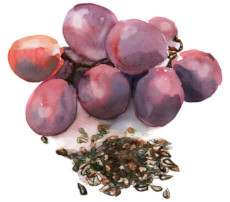
Nigella Sativa (500 milligrams per serving)
Nigella sativa, also known as black seed, is a pepper-like spice that has been used as a food and medicine for thousands of years.
Most of its known health benefits are attributed to thymoquinone, a bioactive compound with antioxidant, anti-inflammatory, and other health-promoting effects.
Research shows that supplementation with nigella sativa . . .
- Improves mood and cognition[18][19]
- Improves sense of well-being[20]
- Can support testosterone levels[21][22]
The clinically effective dose of nigella sativa is between 2 and 3 grams of the raw seed.
Triumph contains 500 milligrams of a 4:1 nigella sativa extract per serving, providing the equivalent of 2 grams of the raw seed.

Olive Leaf Extract (80 milligrams per serving)
Olive leaf extract comes from the leaves of the olive plant, which has been used in European and Middle Eastern medicine for many centuries.
It contains an antioxidant called oleuropein, which can get into your cells’ energy centers—known as mitochondria—and help protect them from damage.
Research shows that supplementation with olive leaf extract helps protect against aging and damage caused by oxidative stress.[23][24][25]
The clinically effective dose of olive leaf extract is between 10 and 1,000 milligrams.

KSM-66® Ashwagandha Root Extract (500 milligrams per serving)
Ashwagandha root extract is a substance derived from a plant root important in Ayurvedic medicine.[26][27][28][29][30]
Ashwagandha is known as an adaptogen, which is a compound that causes an imperceivable level of stress in the body that trains it to better handle future stresses.
Research shows that supplementation with KSM-66® ashwagandha root extract . . .
- Increases power and strength[31]
- Reduces both chronic cortisol levels and acute cortisol increases from stress[32][33]
- Lowers feelings of stress[34][35][36]
- Supports male fertility[37]
- Supports immune system function[38]
- Increases cardiovascular endurance[39][40]
The clinically effective dose of KSM-66® ashwagandha root extract is between 50 and 500 milligrams.

Coenzyme Q10 (120 milligrams per serving)
Coenzyme Q10 (CoQ10) is a substance found in a wide variety of foods, but it’s particularly abundant in organ meats such as heart, liver, and kidney.
It’s also in every cell of the body and functions as an antioxidant and helps with the production of cellular energy.
Research shows that supplementation with CoQ10 . . .
- Supports cardiovascular function[41][42][43]
- Protects sperm structure and function[44]
- Supports antioxidant protection[45]
- Supports mitochondrial function[46]
The clinically effective dose of CoQ10 is between 50 and 200 milligrams, with the majority of benefits seen at 90 milligrams.
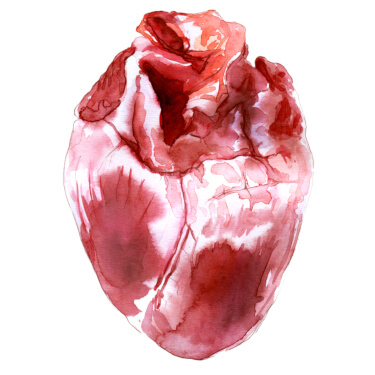
Pumpkin Seed Extract (200 milligrams per serving)
Pumpkin seed extract is a concentrated form of pumpkin seeds rich in beneficial plant compounds like beta-sitosterol and lignans.
Research shows that supplementation with pumpkin seed extract can support prostate health.[47][48][49]
The clinically effective dose of pumpkin seed extract is 8 to 10 grams of the raw seed, depending on the oil content.
Triumph contains 200 milligrams of pumpkin seed extract (providing the equivalent of 8 grams of the raw seed) per serving.

Fucoxanthin (8 milligrams per serving)
Fucoxanthin is a carotenoid, a vitamin A-like molecule found primarily in brown seaweed and microalgae.
It enters cells and increases levels of PGC1-α, a protein in mitochondria that controls how cells produce energy. This process helps your body use energy more efficiently, which is why research shows that supplementation with fucoxanthin improves aerobic performance.[50]
It’s also an antioxidant that crosses the blood-brain barrier and reduces reactive oxygen species—unstable molecules that damage neurons. In doing so, it supports memory, focus, and concentration.[51]
The clinically effective dose of fucoxanthin is between 2.4 and 8 milligrams.

Zeaxanthin (6 milligrams per serving)
Zeaxanthin is a vitamin A-like molecule known as a carotenoid, and it’s found in egg yolks as well as a wide variety of plants and fruits.
Like all carotenoids, it’s an antioxidant but is unique in that it can access areas of the body that others can’t, including the brain and eyes.
Research shows that supplementation with zeaxanthin . . .
- Supports eye function and health[52][53][54]
- Enhances antioxidant protection[55]
- May support cognitive function[56][57]
The clinically effective dose of zeaxanthin is between 4 and 8 milligrams.

Lutein (6 milligrams per serving)
Lutein is a vitamin A-like molecule known as a carotenoid, and it’s found in a number of foods including broccoli, grapes, and squash.
Like zeaxanthin, it’s unique in that it can access areas of the body that other antioxidants can’t, including the brain and eyes.
Research shows that supplementation with lutein . . .
- Supports eye function and health[58][59][60]
- Enhances antioxidant protection[61]
- May support cognitive function[62][63]
The clinically effective dose of lutein is between 4 and 8 milligrams.
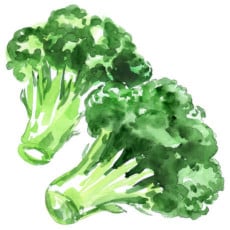
No Artificial Food Dyes, Fillers, or Other Unnecessary Junk
Artificial food dyes and fillers may not be as dangerous as some people claim, but studies show they can cause negative effects in some people, including gastrointestinal toxicity and behavioral disorders.[64][65][66][67][68]
That’s why we use natural coloring derived from fruits and other foods as well as naturally derived ingredients for enhancing shelf life and facilitating the manufacturing process.
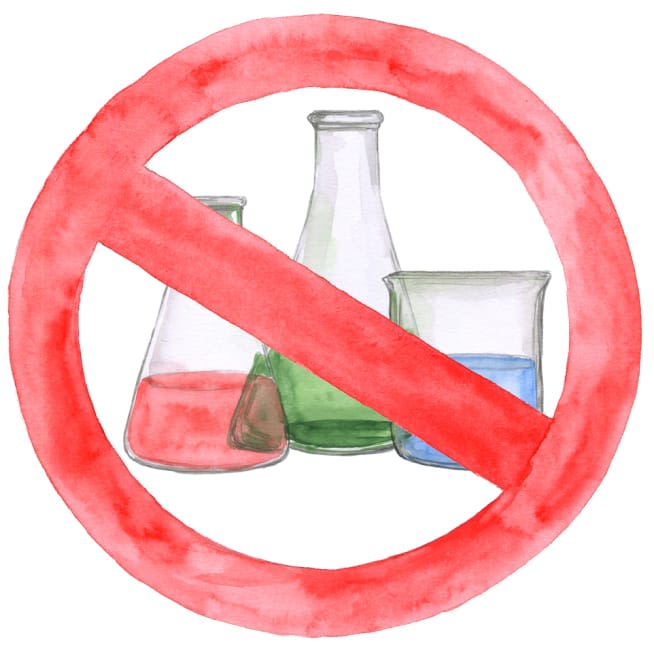
Third-Party Lab Tested by Labdoor™
Triumph is lab-tested for purity and accuracy and independently certified by Labdoor™ to meet or exceed FDA safety guidelines.[69]
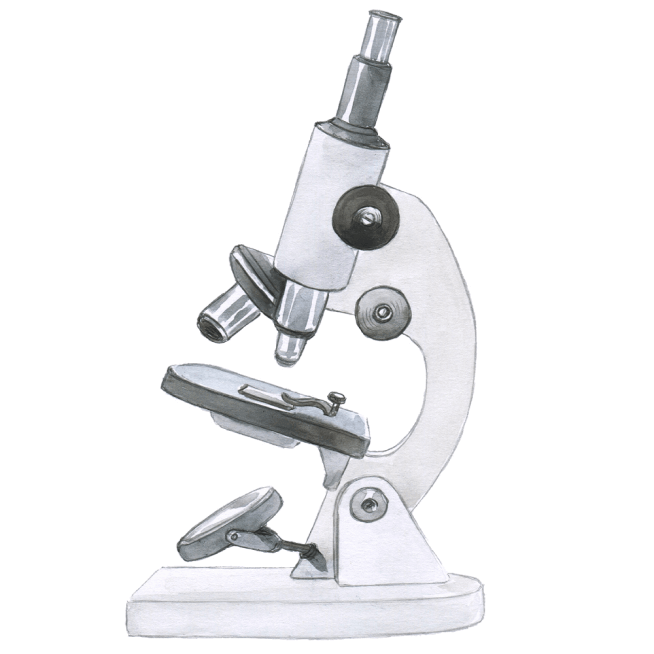
Made in the USA with Globally Sourced Ingredients
If you want to ensure the supplements you’re swallowing every day are safe and effective, you want to buy from a company that:
- Sources ingredients from premium suppliers around the world (great supplements require great raw materials)
- Tests all products for purity and accuracy in accredited laboratories (to conclusively verify safety and efficacy)
- Manufactures in America, which has some of the strictest regulations in the world
And that’s exactly what we do here at Legion.
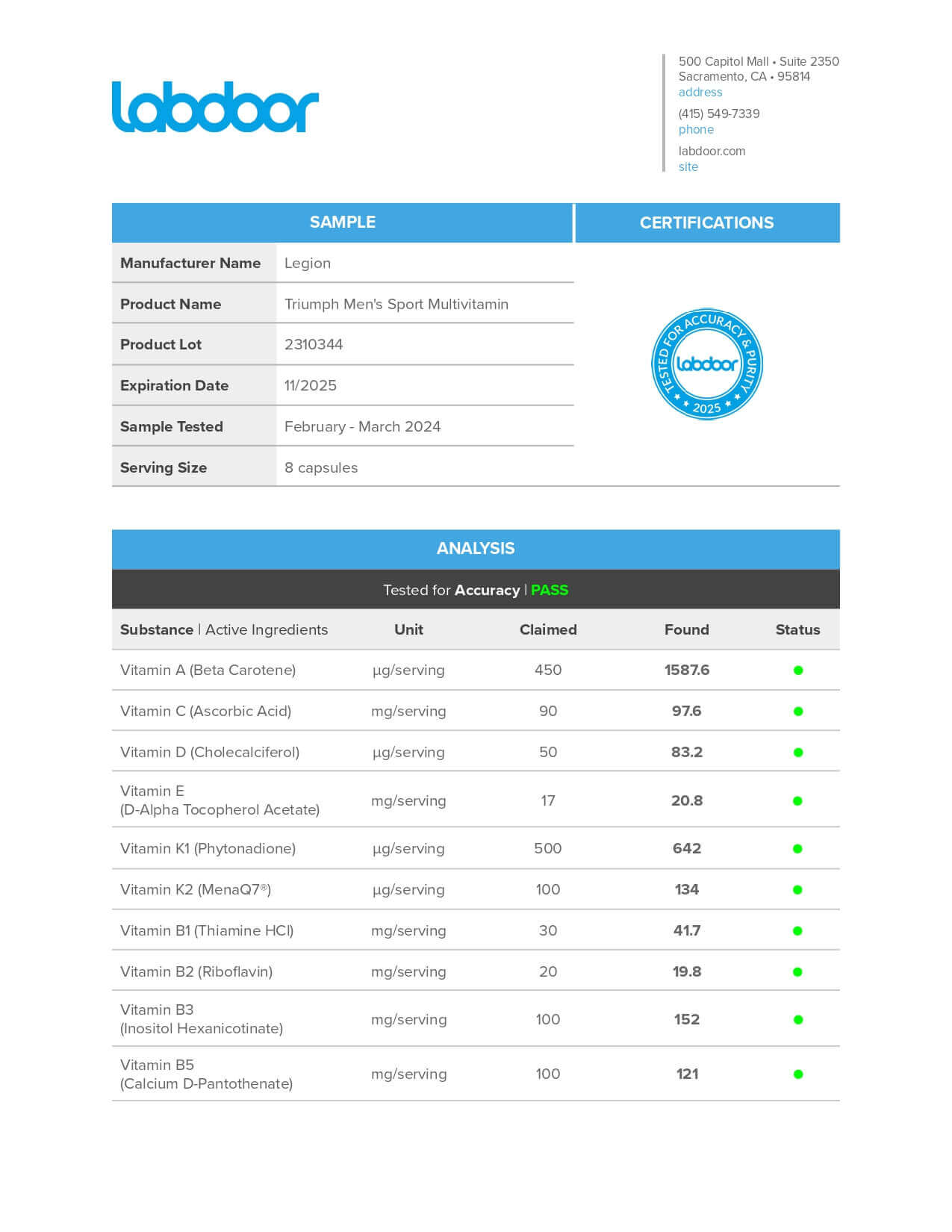
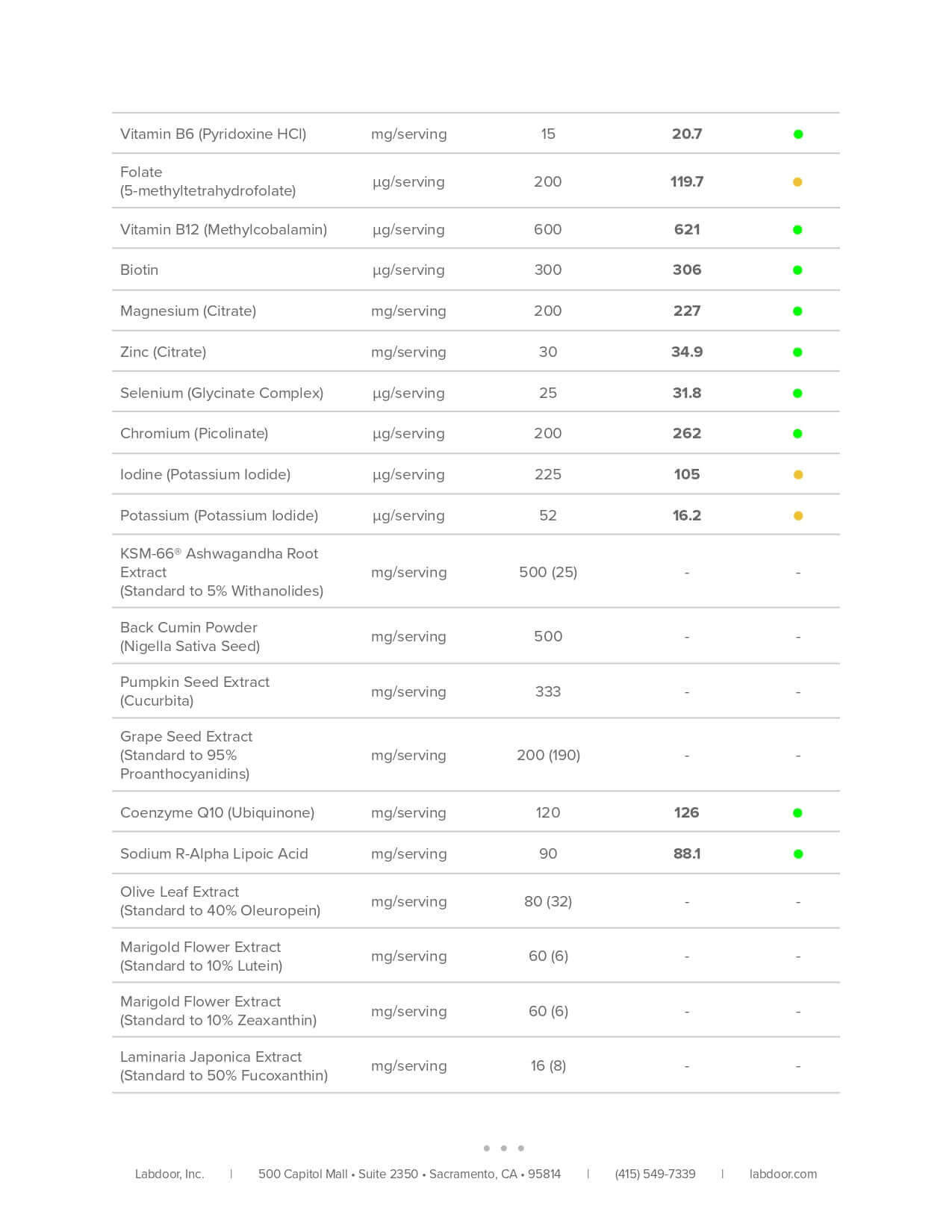

See how Legion Triumph compares to the rest.
- Active Ingredients
- Vitamins K1 and K2
- Folate as 5-Methyltetrahydrofolate
- Vitamin B12 as Methylcobalamin
- KSM-66™ Ashwagandha Extract
- CoQ10
- Third-Party Lab Tested by Labdoor™
- Labdoor™ Ranking
- Price Per Serving
-
Legion
Triumph
- 2,315 mg
per serving - 600 mcg
per serving - 200 mcg
per serving - 600 mcg
per serving - 500 mg
per serving - 120 mg
per serving - A+
-
Vita
JYM
- 1,157 mg
per serving - 120 mcg
per serving - $0.83
-
PEScience
TruMulti
- 1,148 mg
per serving - 120 mcg
per serving - 2.4 mcg
per serving - 600 mg
per serving - $0.83
-
Optimum Nutrition
Opti-Men
- 2,146 mg
per serving - 75 mcg
per serving - $0.90
The #1 brand of naturally sweetened and flavored sports supplements.
We’ve sold over 5 million bags and bottles to over 1 million customers in 169 countries who have left us over 55,000 5-star reviews.
Clinically Effective Ingredients and Doses
Every active ingredient, form, and dose in Triumph is backed by peer-reviewed scientific research demonstrating clear benefits in healthy humans.
No Unnecessary Junk
Triumph contains no artificial food dyes, fillers, or other unnecessary junk.
Total Label Transparency
We clearly list the dose of each ingredient in Triumph on the label—no proprietary blends or hidden ingredients—so you can verify our formulation’s validity and effectiveness.
Third-Party Lab Tested by Labdoor™
Triumph is lab-tested for purity and accuracy and independently certified by Labdoor™ to meet or exceed FDA safety guidelines.
Made in the USA
Triumph is made in America with globally sourced ingredients in NSF-certified, FDA-inspected facilities that adhere to Current Good Manufacturing Practice (cGMP) standards.
100% Money-Back Guarantee
If you don't absolutely love Triumph, you get a prompt and courteous refund. No forms or returns necessary.
Trusted by scientists, doctors, and everyday fitness folk alike.
Frequently Asked Questions
+References
Some popular sport multivitamins contain the right mix of high-quality ingredients. Some provide clinically effective doses. Some don’t have any unnecessary junk. But only Triumph checks each of these boxes.↑
3,319 peer-reviewed scientific studies support Triumph’s ingredients and doses. That’s 23,455 pages of scientific research that shows Triumph works exactly like we say it does.↑
Every serving of Triumph contains 2,315 grams of active ingredients that have been shown to be safe and effective in peer-reviewed scientific research.↑
View Supplement Facts↑
Every ingredient, form, and dose in Triumph is backed by published scientific studies that show benefits in healthy humans.↑
Many supplement ingredients lack scientific validation in humans—we aren't large rodents, after all.
And even when ingredients have proven benefits, they're often used in doses too small to be effective.
That's why we exclusively use ingredients and doses shown to work in peer-reviewed scientific studies on healthy men and women.↑
That’s 23,455 pages of scientific research that shows Triumph works the way we say it does.↑
The proprietary blend is little more than a sneaky way to use tiny (ineffective) amounts of lots of ingredients and hope customers don’t know any better.
Every dose listed. For every ingredient. In every product. Anything else is unacceptable.↑
While these types of chemicals may not be as dangerous as some people claim, studies suggest that regular consumption of them may indeed be harmful to our health. And that’s why you won’t find them in Triumph.↑
Did you know that some supplements contain dangerously high levels of toxins like lead, arsenic, and cadmium?
That’s why we rigorously test every batch and guarantee our products provide exactly what the labels claim—and nothing else.
With Legion, you can be certain that what you're putting into your body is truly safe and effective.
↑
Did you know that some supplements contain dangerously high levels of toxins like lead, arsenic, and cadmium?
That’s why we rigorously test every ingredient in a third-party lab for heavy metals, microbes, allergens, and other contaminants, ensuring they meet the strict purity standards set by the U.S. Food and Drug Administration (FDA). ↑
Labdoor™ is a leader in independent analysis of supplements to assess their quality and safety.
They directly and anonymously purchase products from retail channels, utilize FDA-registered laboratories to rigorously test for label accuracy and purity, and then transparently publish these comprehensive results and certifications for consumer scrutiny.↑
Suh JH, Shenvi SV, Dixon BM, et al. Proc Natl Acad Sci U S A. 2004;101(10):3381-3386. doi:10.1073/pnas.0400282101. ↑
Bast A, Haenen GR. Biochim Biophys Acta. 1988;963(3):558-561. doi:10.1016/0005-2760(88)90326-8.↑
Suh JH, Shenvi SV, Dixon BM, et al. Proc Natl Acad Sci U S A. 2004;101(10):3381-3386. doi:10.1073/pnas.0400282101.↑
Rodriguez MC, MacDonald JR, Mahoney DJ, Parise G, Beal MF, Tarnopolsky MA. Muscle Nerve. 2007;35(2):235-242. doi:10.1002/mus.20688.↑
Xu DP, Wells WW. J Bioenerg Biomembr. 1996;28(1):77-85.↑
Agathos E, Tentolouris A, Eleftheriadou I, et al. J Int Med Res. 2018;46(5):1779-1790. doi:10.1177/0300060518756540.↑
Olas B, Wachowicz B, Stochmal A, Oleszek W. Platelets. 2012;23(4):282-289. doi:10.3109/09537104.2011.618562.↑
Feringa HH, Laskey DA, Dickson JE, Coleman CI. J Am Diet Assoc. 2011;111(8):1173-1181. doi:10.1016/j.jada.2011.05.015.↑
Sapwarobol S, Adisakwattana S, Changpeng S, Ratanawachirin W, Tanruttanawong K, Boonyarit W. Pharmacogn Mag. 2012;8(31):192-196. doi:10.4103/0973-1296.99283.↑
Sano A, Tokutake S, Seo A. J Sci Food Agric. 2013;93(3):457-462. doi:10.1002/jsfa.5773.↑
Yang H, Lee BK, Kook KH, Jung YS, Ahn J. Curr Eye Res. 2012;37(4):339-344. doi:10.3109/02713683.2011.645106.↑
Raina K, Tyagi A, Kumar D, Agarwal R, Agarwal C. Food Chem Toxicol. 2013;61:187-195. doi:10.1016/j.fct.2013.06.039.↑
Bin Sayeed MS, Shams T, Fahim Hossain S, et al. J Ethnopharmacol. 2014;152(1):156-162. doi:10.1016/j.jep.2013.12.050.↑
Bin Sayeed MS, Asaduzzaman M, Morshed H, Hossain MM, Kadir MF, Rahman MR. J Ethnopharmacol. 2013;148(3):780-786. doi:10.1016/j.jep.2013.05.004.↑
Fallah Huseini H, Amini M, Mohtashami R, et al. Phytother Res. 2013;27(12):1849-1853. doi:10.1002/ptr.4944.↑
Ardakani Movaghati MR, Yousefi M, Saghebi SA, Sadeghi Vazin M, Iraji A, Mosavat SH. Phytother Res. 2019;33(5):1404-1412. doi:10.1002/ptr.6331.↑
Datau EA, Wardhana, Surachmanto EE, Pandelaki K, Langi JA, Fias. Acta Med Indones. 2010;42(3):130-134.↑
Covas MI, de la Torre K, Farré-Albaladejo M, et al. Free Radic Biol Med. 2006;40(4):608-616. doi:10.1016/j.freeradbiomed.2005.09.027.↑
Raederstorff D. Int J Vitam Nutr Res. 2009;79(3):152-165. doi:10.1024/0300-9831.79.3.152.↑
García-Villalba R, Larrosa M, Possemiers S, Tomás-Barberán FA, Espín JC. Eur J Nutr. 2014;53(4):1015-1027. doi:10.1007/s00394-013-0604-9.↑
Cooley K, Szczurko O, Perri D, et al. PLoS One. 2009;4(8):e6628. Published 2009 Aug 31. doi:10.1371/journal.pone.0006628.↑
Bonilla DA, Moreno Y, Gho C, Petro JL, Odriozola-Martínez A, Kreider RB. J Funct Morphol Kinesiol. 2021;6(1):20. Published 2021 Feb 11. doi:10.3390/jfmk6010020.↑
KSM-66 Ashwagandha. Accessed June 30, 2024.↑
Wankhede S, Langade D, Joshi K, Sinha SR, Bhattacharyya S. J Int Soc Sports Nutr. 2015;12:43. Published 2015 Nov 25. doi:10.1186/s12970-015-0104-9↑
Khan B, Ahmad SF, Bani S, et al. Int Immunopharmacol. 2006;6(9):1394-1403. doi:10.1016/j.intimp.2006.04.001↑
Auddy, Biswajit, Jayaram Hazra, and Achintya Mitra. (2008).↑
Andrade C, Aswath A, Chaturvedi SK, Srinivasa M, Raguram R. Indian J Psychiatry. 2000;42(3):295-301.↑
Cooley K, Szczurko O, Perri D, et al. PLoS One. 2009;4(8):e6628. Published 2009 Aug 31. doi:10.1371/journal.pone.0006628.↑
Auddy, Biswajit, Jayaram Hazra, and Achintya Mitra. (2008).↑
Ambiye VR, Langade D, Dongre S, Aptikar P, Kulkarni M, Dongre A. Evid Based Complement Alternat Med. 2013;2013:571420. doi:10.1155/2013/571420.↑
Mikolai J, Erlandsen A, Murison A, et al. J Altern Complement Med. 2009;15(4):423-430. doi:10.1089/acm.2008.0215.↑
Shenoy S, Chaskar U, Sandhu JS, Paadhi MM. J Ayurveda Integr Med. 2012;3(4):209-214. doi:10.4103/0975-9476.104444.↑
Sehgal N, Gupta A, Valli RK, et al. Proc Natl Acad Sci U S A. 2012;109(9):3510-3515. doi:10.1073/pnas.1112209109.↑
Kurapati KRV, Atluri VSR, Samikkannu T, Nair MPN. PLoS One. 2013;8(10):e77624. doi:10.1371/JOURNAL.PONE.0077624.↑
Watts GF, Playford DA, Croft KD, Ward NC, Mori TA, Burke V. Diabetologia. 2002;45(3):420-426. doi:10.1007/s00125-001-0760-y.↑
Hamilton SJ, Chew GT, Watts GF. Diabetes Care. 2009;32(5):810-812. doi:10.2337/dc08-1736.↑
Ahmadvand H, Mabuchi H, Nohara A, Kobayahi J, Kawashiri MA. Acta Med Iran. 2013;51(1):12-18.↑
Talevi R, Barbato V, Fiorentino I, Braun S, Longobardi S, Gualtieri R. Reprod Biol Endocrinol. 2013;11:81. Published 2013 Aug 16. doi:10.1186/1477-7827-11-81.↑
Lee BJ, Tseng YF, Yen CH, Lin PT. Nutr J. 2013;12(1):142. Published 2013 Nov 6. doi:10.1186/1475-2891-12-142.↑
Lee BJ, Tseng YF, Yen CH, Lin PT. Nutr J. 2013;12(1):142. Published 2013 Nov 6. doi:10.1186/1475-2891-12-142.↑
Damiano R, Cai T, Fornara P, Franzese CA, Leonardi R, Mirone V. Arch Ital Urol Androl. 2016;88(2):136-143. Published 2016 Jul 4. doi:10.4081/aiua.2016.2.136.↑
Shirvan MK, Mahboob MR, Masuminia M, Mohammadi S. J Pak Med Assoc. 2014;64(6):683-685.↑
Leibbrand M, Siefer S, Schön C, et al. J Med Food. 2019;22(6):551-559. doi:10.1089/jmf.2018.0106.↑
Abidov M, Ramazanov Z, Seifulla R, Grachev S. Diabetes Obes Metab. 2010;12(1):72-81. doi:10.1111/j.1463-1326.2009.01132.x.↑
Maeda H, Hosokawa M, Sashima T, Funayama K, Miyashita K. Biochem Biophys Res Commun. 2005;332(2):392-397. doi:10.1016/j.bbrc.2005.05.002.↑
Maeda H, Hosokawa M, Sashima T, Murakami-Funayama K, Miyashita K. Mol Med Rep. 2009;2(6):897-902. doi:10.3892/mmr_00000189.↑
Kang SI, Ko HC, Shin HS, et al. Biochem Biophys Res Commun. 2011;409(4):769-774. doi:10.1016/j.bbrc.2011.05.086.↑
Maeda H, Hosokawa M, Sashima T, Murakami-Funayama K, Miyashita K. Mol Med Rep. 2009;2(6):897-902. doi:10.3892/mmr_00000189.↑
Dawczynski J, Jentsch S, Schweitzer D, Hammer M, Lang GE, Strobel J. Graefes Arch Clin Exp Ophthalmol. 2013;251(12):2711-2723. doi:10.1007/s00417-013-2376-6.↑
Age-Related Eye Disease Study 2 (AREDS2) Research Group, Chew EY, Clemons TE, et al. JAMA Ophthalmol. 2014;132(2):142-149. doi:10.1001/jamaophthalmol.2013.7376.↑
Ma L, Hao ZX, Liu RR, Yu RB, Shi Q, Pan JP. Graefes Arch Clin Exp Ophthalmol. 2014;252(1):63-70. doi:10.1007/s00417-013-2492-3.↑
Karppi J, Laukkanen JA, Kurl S. Br J Nutr. 2012;108(1):148-154. doi:10.1017/S0007114511005332.↑
Ma L, Dou HL, Huang YM, et al. Am J Ophthalmol. 2012;154(4):625-634.e1. doi:10.1016/j.ajo.2012.04.014.↑
Ma L, Yan SF, Huang YM, et al. Ophthalmology. 2012;119(11):2290-2297. doi:10.1016/j.ophtha.2012.06.014.↑
Berrow EJ, Bartlett HE, Eperjesi F, Gibson JM. Br J Nutr. 2013;109(11):2008-2014. doi:10.1017/S0007114512004187.↑
Nidhi B, Mamatha BS, Padmaprabhu CA, Pallavi P, Vallikannan B. Indian J Ophthalmol. 2013;61(12):722-727. doi:10.4103/0301-4738.120218.↑
Ma L, Hao ZX, Liu RR, Yu RB, Shi Q, Pan JP. Graefes Arch Clin Exp Ophthalmol. 2014;252(1):63-70. doi:10.1007/s00417-013-2492-3.↑
Feng J, Cerniglia CE, Chen H. Front Biosci (Elite Ed). 2012;4:568-586. Published 2012 Jan 1. doi:10.2741/400.↑
Kanarek RB Nutr Rev. 2011;69(7):385-391. doi:10.1111/j.1753-4887.2011.00385.x.↑
Nigg JT, Lewis K, Edinger T, Falk M. J Am Acad Child Adolesc Psychiatry. 2012;51(1):86-97.e8. doi:10.1016/j.jaac.2011.10.015.↑
McCann D, Barrett A, Cooper A, et al. 2007 Nov 3;370(9598):1542]. Lancet. 2007;370(9598):1560-1567. doi:10.1016/S0140-6736(07)61306-3.↑
Gao Y, Li C, Shen J, Yin H, An X, Jin H. J Food Sci. 2011;76(6):T125-T129. doi:10.1111/j.1750-3841.2011.02267.x.↑
Did you know that some supplements contain dangerously high levels of toxins like lead, arsenic, and cadmium?
That's why we rigorously test every ingredient in a third-party lab for heavy metals, microbes, allergens, and other contaminants, ensuring they meet the strict purity standards set by the U.S. Food and Drug Administration (FDA) and World Anti Doping Agency (WADA).↑
